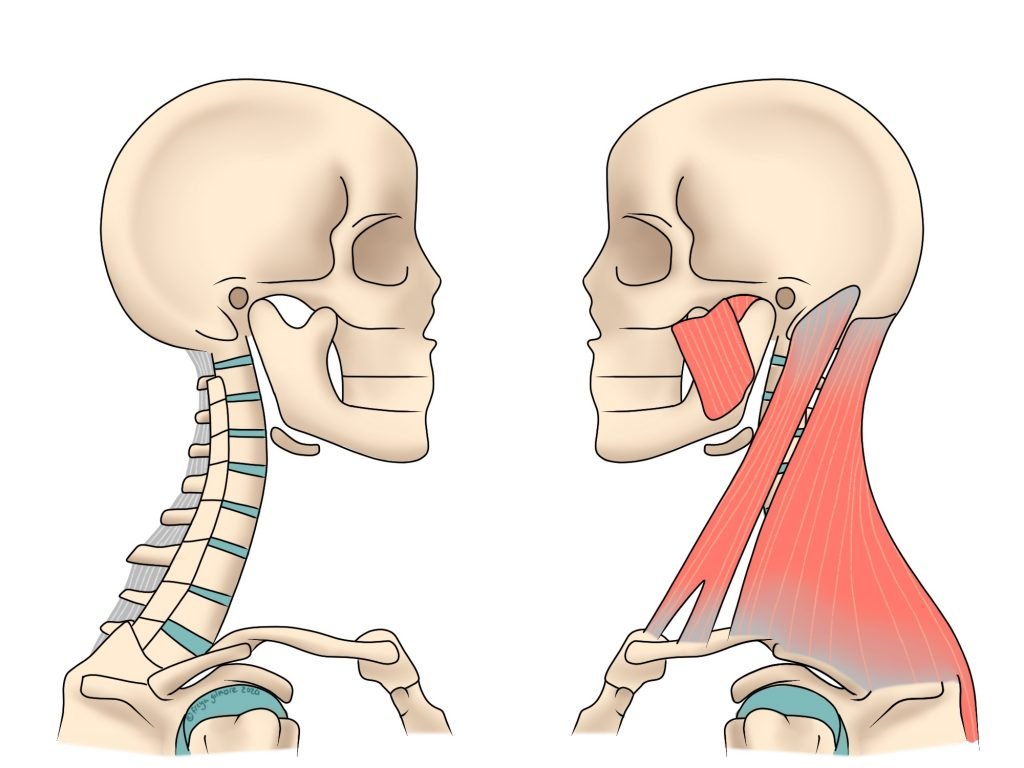The IT band is a band of tissue that runs down the side of the…

Neck Pain
Alongside lower back pain, neck pain is a very common complaint. There are a lot of similarities between neck and lower back pain, but also some key differences. Whereas the lower back is made of large, weight bearing bones, the neck is much more dainty. This is because it is adapted for mobility over weight bearing.
The heavy head
Because the neck is suited for mobility over weight bearing, one easy way to upset it is to overload it. When you sit or stand upright and your head is balanced centrally on top of your neck, there is little demand on the neck itself. However, tilting your head in any direction applies a force to the neck of up to 4 times the weight of your head. The muscles have to work hard to keep it in position, which is fine for brief periods. Working on a laptop on the sofa for hours at a time is not so fine. The muscles become fatigued and tight and may cause compensation elsewhere.
Similarly, activities like driving with hunched shoulders or with your head forward can cause muscle fatigue. Your head should be in contact with the headrest at around ear height to minimise trauma should you be involved in a crash. Correct headrest positioning could prevent your neck pain in two ways!
Associated Symptoms
Some headaches begin in the neck. If the upper neck is suffering, these headaches are more common. The reason for this is that the nerves that supply the head come from further up the neck. Problems with the lower neck are more likely to affect the arm. Likewise, problems with the shoulder may affect the neck; especially if they lead you to hitch your shoulder to protect it.
Pain can be caused by muscles, joints, discs, and ligaments. There is often overlap between two or more of these, and treatment will likely work over all of them. As with the back, imaging is rarely necessary for this kind of pain. Your osteopath will know when it is appropriate to refer you to your GP for imaging.
Traumatic neck pain
The neck is very mobile and is prone to injury in traumatic situations. Whiplash injuries should be investigated before seeing your osteopath. This applies to both road traffic accidents and sports injuries.
Managing neck pain
The easiest way to prolong your neck pain is to limit movement. The use of supportive collars or braces is not routinely recommended. Keeping your neck moving within a relatively comfortable range reduces the chances of the neck stiffening up unnecessarily.
Your osteopath can help you find the happy medium between restriction and excess movement so you can start to get back to normal. They may prescribe exercises for you to do, both for improving mobility and strengthening the neck and related areas.
We have a range of techniques at our disposal for treating the neck. Some people prefer a more gentle approach and respond really well to this. Others feel better after stronger techniques like manipulation. Your osteopath will discuss this with you to find the most comfortable and effective way to treat you.
Whether your pain is chronic or new, osteopathy can help. Book an appointment today.




